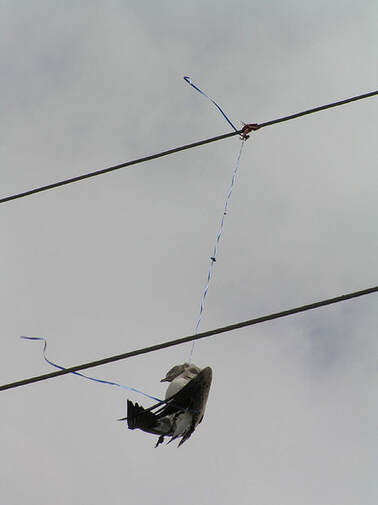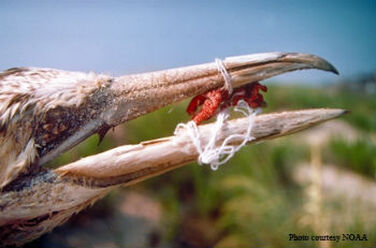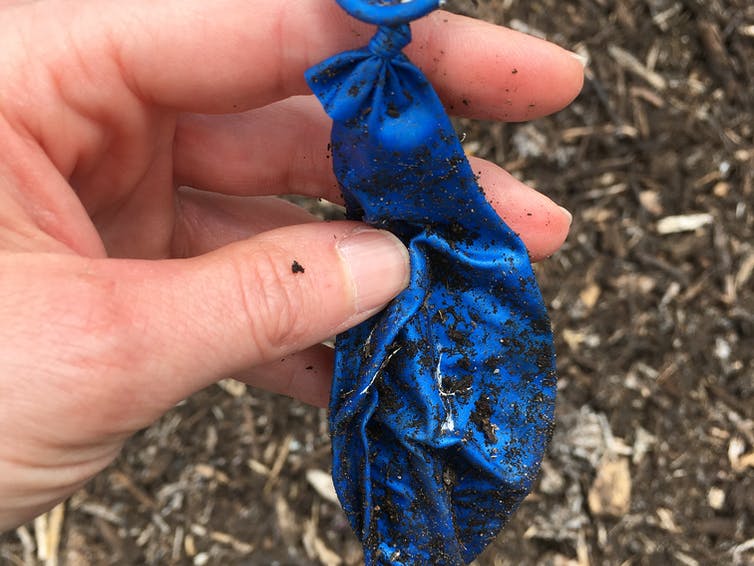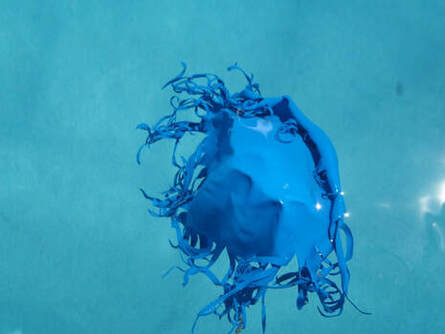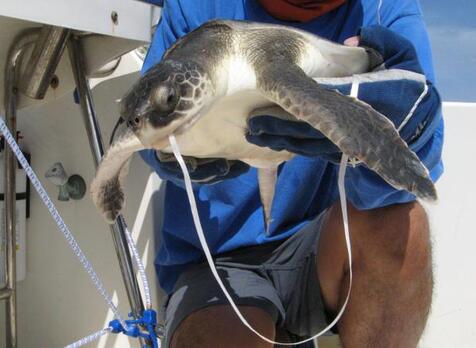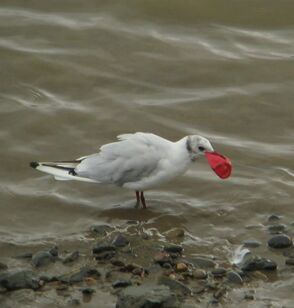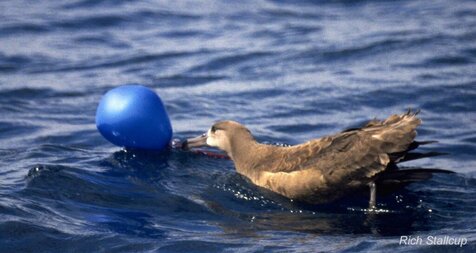Read more about the survey in The Conversation article here.
Not only do balloons pollute the environment, they are deadly for wildlife and livestock.
|
When released into the atmosphere, helium balloons are able to travel vast distances (more than 10,500 miles). Every balloon will eventually land, becoming litter on beaches, rivers, lakes, oceans, and other natural areas. As a direct result, wildlife, livestock, and pets can be injured or killed from ingesting the balloon debris and/or becoming entangled in the long ribbons or strings.
Between 2016 and 2018, volunteers with The Alliance for the Great Lakes picked up more than 18,000 pieces of balloon debris. The International Coastal Cleanup, an annual event organized by the Ocean Conservancy, recorded finding over 280,000 balloons in the United States and over 630,000 balloons worldwide between 2008 and 2016. There are two types of balloons - mylar and latex. Mylar balloons, made from nylon (a plastic material) with a metallic coating, will never biodegrade. Mylar balloons are also responsible for power outages when they hit power lines and/or electric circuit breakers. For example, in 2018, mylar balloons caused over 1,100 power outages in Southern California. They were also responsible for 619 incidents and delays at railway stations across England, Scotland and Wales, and end up costing British taxpayers around £1m a year. While some manufacturers claim that natural latex balloons made from liquid rubber are 'biodegradable', they are in fact mixed with plasticizers and other chemical additives that hinder the biodegradation process. (Read about a new scientific study that tested the claim that latex balloons are 'biodegradable' here.) Other latex balloons are synthetic, made from a petroleum derivative called neoprene (the same material used to make scuba diving wetsuits) and will remain in the environment indefinitely. |
Latex balloons also burst in the atmosphere and shred into small pieces, which, when floating on the surface of water, resemble jellyfish or squid. Balloons are also brightly colored and give off a chemical scent that wildlife associates with prey. So, on every level, balloon debris mimics the prey of seabirds, turtles, fish, and other marine wildlife.
A new study from the University of Tasmania has found that out of all marine debris, latex balloons pose the highest risk of mortality for seabirds and are 32 times more likely to kill than hard plastics when ingested. Latex balloons are made from a soft, malleable material that can easily conform to a bird's stomach cavity or digestive tract, causing obstruction, starvation, and death. Balloons are also tied with long ribbons, strings, and plastic ties that can also lead to entanglement, strangulation, and starvation.
Here is a short video from Zoos Victoria in Australia describing the impact of balloons on seabirds.
Helium is also a finite resource and is quickly being depleted. Helium is essential for scientific research, electronics, and life-saving medical tests like MRI scans. As the cost of helium continues to rise, scientific researchers and medical practitioners are calling for a ban on the use of helium in party balloons.
While awareness of balloon litter is growing, balloon releases are still common at weddings, graduations, birthdays, memorials, and other events. California, Connecticut, Florida, Tennessee, and Virginia, have recently passed laws prohibiting the release of balloons in order to protect the environment and wildlife. You can read more about the existing balloon bans and restrictions here. Hopefully, more states will follow.
Please urge your local, state, and national leaders to take action to prohibit mass balloon releases and help support legislation.
For more information on this issue, see the News & Research page on this site.
While awareness of balloon litter is growing, balloon releases are still common at weddings, graduations, birthdays, memorials, and other events. California, Connecticut, Florida, Tennessee, and Virginia, have recently passed laws prohibiting the release of balloons in order to protect the environment and wildlife. You can read more about the existing balloon bans and restrictions here. Hopefully, more states will follow.
Please urge your local, state, and national leaders to take action to prohibit mass balloon releases and help support legislation.
For more information on this issue, see the News & Research page on this site.
